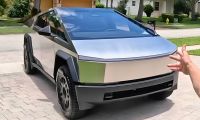It’s called “kaizen” which is the Japanese manufacturing method that involves continuous, incremental improvements in efficiency. Subaru is using kaizen at their factory in Ota, Japan that produces the 2016 Subaru Forester which is the top selling vehicle for the brand in the U.S. market. They are doing everything they can to keep up with demand of the compact SUV.
According to a report by the Wall Street Journal, FHI has adopted simple yet effective techniques to make production of the new Forester go a little quicker. They use things innovations like a specially designed system of sloping shelves to provide assembly line workers with parts. It saves the workers time by raising a hinged part of the device when the bin needs more parts and the empty tub slides away, making way for a new one that slides into its place.
Other step-saving improvements include the implementation of vacuum cleaner-like tools that gather empty plastic wrappings that cover various parts in the assembly process. Before its implementation, workers had to gather up the plastic and throw it into a waste basket. Now, the workers just hold their hands over the vacuum nozzle and the machine does the rest. These kaizen incremental improvements really do help increase efficiency.
Because U.S. consumers are snatching up the 2016 Forester and Crosstrek models in record numbers, these incremental changes help the Japanese automaker squeeze out a few more cars per day at their Ota operations, which include two assembly plants and an engine and transmission facility. FHI’s goal is to raise production in Japan to 650,000 Subaru vehicles a year from an annual rate of 636,000 in September. The small improvements have the effect of 14,000 more vehicles being produced per year.
Media source: Wall Street Journal












